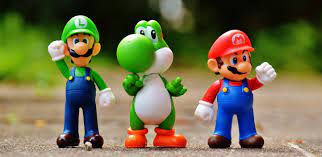Physical Address
304 North Cardinal St.
Dorchester Center, MA 02124

Animation, with its captivating visuals and boundless imagination, has charmed audiences worldwide. From blockbuster films to commercial advertisements, animation’s influence is ubiquitous. However, one lingering question for many is: Why is animation so expensive? This post endeavors to demystify the costs associated with creating animated content.
1. Time-Consuming Process
One of the primary reasons behind the high costs of animation is the sheer amount of time it demands. A single minute of high-quality animation can take weeks or even months to produce. Every frame is meticulously crafted, and with most animations running at 24 frames per second, the effort quickly adds up.
2. Expertise and Talent
The animation industry thrives on talent. Skilled animators, storyboard artists, character designers, background artists, and directors are essential to produce compelling content. Retaining such talent requires competitive compensation, which directly impacts costs.
3. Cutting-Edge Technology
Modern animation often leans on advanced software and high-performance hardware. From rendering farms that process complex scenes to professional-grade software suites, the technological backbone of the animation industry is costly to establish and maintain.
4. Detailed Artistry
Unlike live-action films that use real locations and actors, everything in an animated scene, from characters to backgrounds, is created from scratch. This level of detailed artistry requires additional hours and specialized skills, escalating the costs.
5. Iterative Nature
Animation is an iterative process. Scenes are sketched, tested, revised, and sometimes even scrapped before the final version is approved. This cycle of creation and revision, while essential for quality, also drives up the production time and costs.
6. Sound Production
Beyond visuals, an animated piece also demands high-quality sound production, including voice acting, sound effects, and background music. Hiring seasoned voice actors and sound engineers, as well as licensing or creating original music, contributes to the budget.
7. Post-Production Efforts
After the animation is complete, there’s a post-production phase that involves editing, color correction, sound mixing, and more. This phase ensures the animation meets the desired quality standards and is cohesive in its storytelling.
8. Marketing and Distribution
For animated films or series, marketing is a substantial part of the budget. Promotional events, advertisements, merchandise, and distribution efforts require additional funds, indirectly adding to the cost of the animation itself.
Conclusion
Animation, with its capacity to bring the impossible to life, is an art form that demands passion, patience, and a plethora of resources. The expenses associated with animation are a testament to the dedication and craftsmanship that animators and their teams pour into their creations. Understanding the intricacies behind the scenes allows for a deeper appreciation of the magic that unfolds on screen. Whether it’s a heartwarming tale or an adrenaline-pumping adventure, the world of animation is worth every penny.